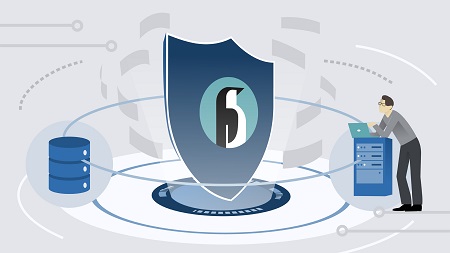
English | MP4 | AVC 1280×720 | AAC 48KHz 2ch | 7h 13m | 1.63 GB
Prepare for the LPI Linux Essentials (010-160) certification exam. This course covers the five domains of this popular Linux exam, so that you can earn your certification and expand your career options as a Linux professional. Learn the fundamentals of the operating system, get introduced to numerous Linux distributions, and gain experience in the configuration, management, and usage of common open-source software applications. Instructor Jason Dion also reviews commands and scripting, process management, networking, user management, and permissions. In addition to theory, you get step-by-step demonstrations in practical labs and really learn how to use and configure key features and functionality. By the end of the course, you should start to feel like a true Linux professional.
Topics include:
- The history and evolution of Linux
- Comparing distributions
- Installing Linux
- Popular open-source applications for Linux
- Working with the Linux shell and commands
- Managing software packages
- Writing commands in the command line
- Manipulating files and directories
- Searching for and extracting data
- Scripting in Linux
- Turning commands into scripts
- Reviewing processes and process data
- Configuring network connections
- Managing user accounts and groups
- Setting files owners and permissions
Table of Contents
1 LPI Linux essentials
2 About the exam
3 Introduction to Linux
4 Open-source philosophy
5 Linux distributions
6 Distribution life cycle
7 Comparing distributions
8 Embedded systems
9 Hardware requirements
10 Installing Linux
11 OS differences
12 What is open source
13 Cost of open source
14 Desktop and server apps
15 Languages and tools
16 Package installs and repositories
17 Linux desktop environment
18 Programs and software
19 Linux shell and commands
20 Managing software packages
21 Basic shell
22 Command-line syntax
23 Variables
24 Quoting
25 Proper command usage
26 Man and info pages
27 Introduction to Linux filesystem
28 Linux filesystem key features
29 Navigating files and directories
30 File creation and management
31 Creating links
32 Wildcards and case sensitivity
33 Manipulating directories
34 Manipulating files and directories
35 Command-line pipes
36 I O redirection
37 Piping and redirection
38 Basic regular expressions
39 Archiving files
40 Data search and extraction
41 Text files and text editors
42 Using vi and nano
43 Beginning a shell script
44 Commands
45 Arguments
46 Variables
47 Conditional expressions
48 Loops and functions
49 Exit value
50 Turning commands into a script
51 Package management principles
52 Package management systems
53 Using RPM and DEB
54 Process hierarchy
55 Identifying running processes
56 Measuring memory use
57 Log files
58 The kernel ring buffer
59 Network features
60 Configuring a network connection
61 Network testing
62 Network protection
63 Connecting to a network
64 Understanding user accounts
65 Account security
66 Understanding groups
67 Using account tools
68 Creating accounts from the shell
69 Modifying and deleting accounts
70 Managing groups
71 Working as root
72 Setting ownership
73 Setting ownership demonstration
74 Understanding permissions
75 Permission strings and setting the umask
76 Using sticky bits
77 Using special execute permissions
78 Hiding files and directories
79 Setting permissions
80 Next steps
Resolve the captcha to access the links!